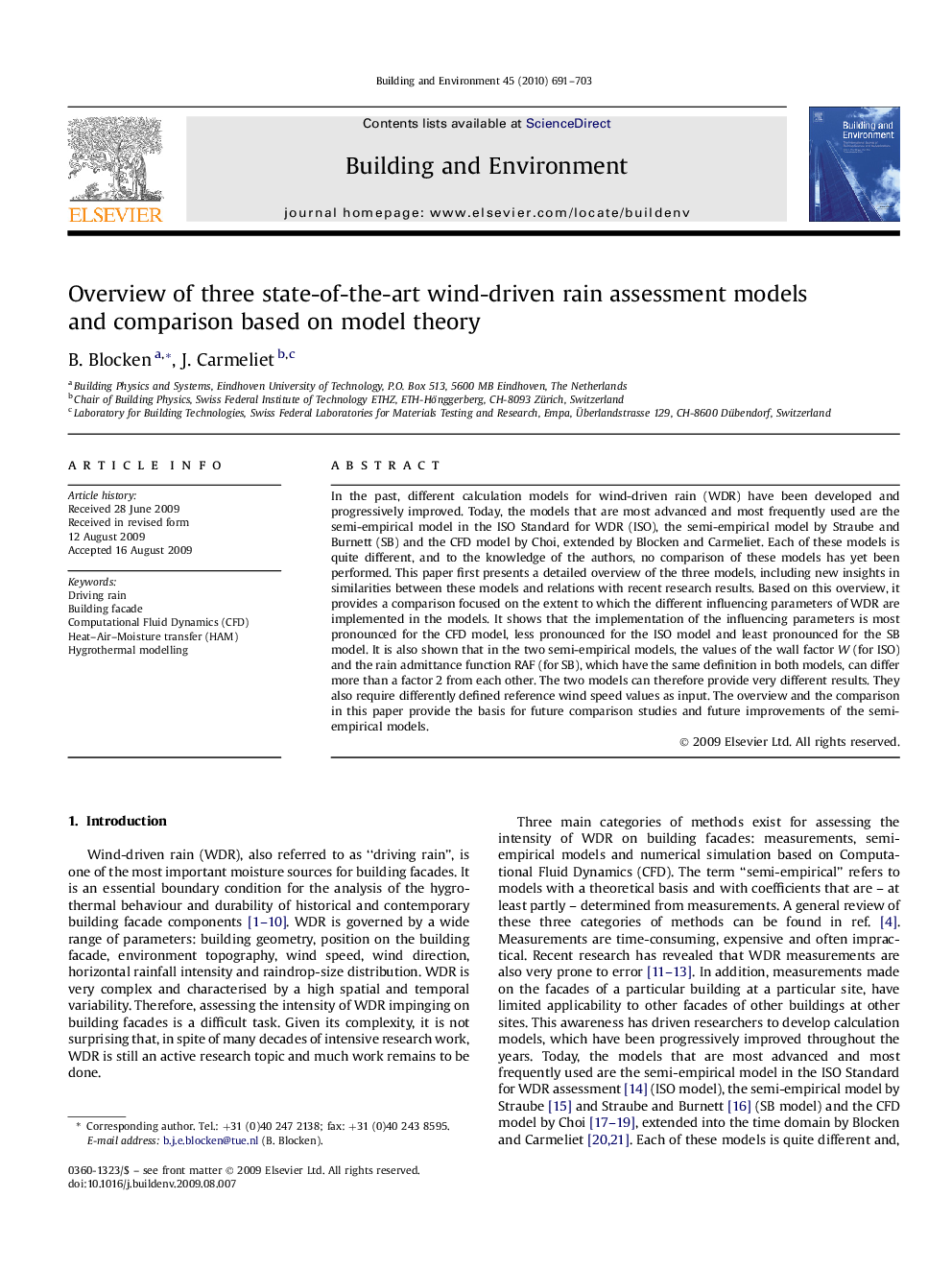| Article ID | Journal | Published Year | Pages | File Type |
|---|---|---|---|---|
| 249399 | Building and Environment | 2010 | 13 Pages |
In the past, different calculation models for wind-driven rain (WDR) have been developed and progressively improved. Today, the models that are most advanced and most frequently used are the semi-empirical model in the ISO Standard for WDR (ISO), the semi-empirical model by Straube and Burnett (SB) and the CFD model by Choi, extended by Blocken and Carmeliet. Each of these models is quite different, and to the knowledge of the authors, no comparison of these models has yet been performed. This paper first presents a detailed overview of the three models, including new insights in similarities between these models and relations with recent research results. Based on this overview, it provides a comparison focused on the extent to which the different influencing parameters of WDR are implemented in the models. It shows that the implementation of the influencing parameters is most pronounced for the CFD model, less pronounced for the ISO model and least pronounced for the SB model. It is also shown that in the two semi-empirical models, the values of the wall factor W (for ISO) and the rain admittance function RAF (for SB), which have the same definition in both models, can differ more than a factor 2 from each other. The two models can therefore provide very different results. They also require differently defined reference wind speed values as input. The overview and the comparison in this paper provide the basis for future comparison studies and future improvements of the semi-empirical models.
